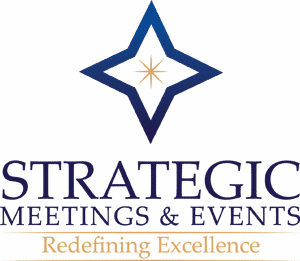Sales Follow-Up Calls and Emails: Why, When, and How
Gatekeepers and decision-makers receive hundreds of emails and tens of calls each day. Not getting a response doesn’t automatically signal a lack of interest–they could really just be too busy.

If you want to get through to them, you need to follow up.
For someone working in sales, there are many reasons why following up should be part of your toolbox–if not one of your main weapons.
Why are follow up calls and emails important in sales?
According to a study by Marketing Donut, 80 percent of sales take 5 follow-up phone calls after the initial meeting to close. However, it was found in this study that almost half of salespeople give up after just one follow-up. Having a persistent follow-up plan in place already puts you ahead of the curve.
Even in struggling markets, sales follow-ups are essential. In this study of mortgage lenders by Tenfold data analyst Roshan Shetty, he found that the most successful salespeople are those who are persistent in following up both by phone and email.
When do I need to follow up on sales leads?
If you want to get ahead of the competition, one simple change you need to make is to follow up more. Sirius Decisions released a study that found the average salesperson just making two attempts to reach a prospect. So whether it’s following up on an appointment or dialing out to try if someone picks up–keeping up this practice is all worth it in the long run.
Aside from persistence, another equally important component of following-up is the response time. Lead response time is simply the measurement of how quick a business responds to a lead that initiated contact.
A famous Harvard Business Reviews study highlighted that out of 2,241 U.S. companies they measured, 24% took more than 24 hours to respond to lead-initiated contact, with 23% of the companies never responding at all.
These are alarming numbers that businesses should guard against, especially because a similar paper written and published by MIT professor James Oldroyd et.al. discovered that the chance of qualifying a lead drops to 10% after the first hour. Worse, no leads were qualified past the 10-hour mark. This basically means that postponing the pursuit of a lead for the next day will most likely result in the lead going “cold”.
How to follow up: Best practices
Steer clear of “touching base” calls and emails
 Token emails and calls without providing value are more likely to annoy sales leads than move them along the funnel. A quick way to demonstrate value is to show care by immediately referencing a past call at the beginning of the follow-up. It could be something previously agreed upon or just a quick mention of a detail from a past call. Maybe they attended a webinar, or you or one of your colleagues encountered each other at a trade show.
Token emails and calls without providing value are more likely to annoy sales leads than move them along the funnel. A quick way to demonstrate value is to show care by immediately referencing a past call at the beginning of the follow-up. It could be something previously agreed upon or just a quick mention of a detail from a past call. Maybe they attended a webinar, or you or one of your colleagues encountered each other at a trade show.
Whatever approach you choose, ensure that your call is tailored to the particular prospect. Saying you’re calling to “touch base” or to “circle back” doesn’t give the prospect or lead any incentive to talk to you. Warming up the call is always a must. This is why detailed note-taking and logging calls are such important habits for salespeople. Integrating your phone system with your CRM through a CTI helps instill these habits.
Utilize repetition
It may sound counterintuitive to repeat details that were agreed upon and discussed, but repetition is one your most powerful tools as a salesperson. People tend to pick up and believe what they hear repeatedly. Reiterating how the prospect or lead will benefit from your product is important. The truth is that decision makers receive a lot of calls and not making an effort to leave a lasting impression will quickly erase you from their memory bank. The more they retain, the faster you can educate them on why their problems can be remedied by your proposed solution.
Reach out through different channels
Salespeople must have information on the different ways to reach prospects and leads. You need to be able to reach out using all types of communication–phone call, chat, SMS, email, or even on-site visits. Each client will have their own preferred channel so make sure to note this down. Reach out using a combination of different channels with emphasis to their preference.
The minimum should be phone calls (both live and voicemails) and email. Voicemails are proven to be still effective as they improve familiarity. Your VMs are not enough to close the deal–but they sure help with recall and improving response rates for future outreach.
Also, leverage your online presence. Be easily accessible through social media networks, discussion boards, and through blogs. Seek to provide value to prospects and their companies even just through adding to valuable discussions on their own platforms like their SlideShare posts or blog comments.
Brush up on your summarizing skills
The ability to give a quick rundown of what was just discussed should be a skill developed by all salespeople. Once a call is over, reps should be able to summarize all the salient points quickly. Best practice is to send this list over in an email and ask for the lead or prospect’s confirmation. This also helps maintain the conversation moving forward.
Always set a plan of action for the next call

Never end a call without a ‘next step’. Salespeople must close each interaction with a clear-cut plan. It could either be setting up an appointment for the next call, scheduling an on-site visit, or even scheduling a demo with other stakeholders to reiterate the value of your solution.
Use templates and scripts
The sales team or a dedicated sales enablement team must create call/voicemail scripts and email templates to serve as guides for salespeople. Of course, these guides are different from mass email scripts. Templates and scripts help reps ensure that every relevant point is covered in each interaction. Personalization is still a must when using these templates in day-to-day prospecting and following up. Workshopping subject lines must also be done to share experiences in what works and what doesn’t.
Use existing marketing content
Sales enablement and marketing teams should supply sales with content that they can use to enrich sales conversations and provide value to customer and prospects. For example, customer testimonials and case studies of similar use cases are very valuable in helping prospects visualize their company using your solution. In the same vein, industry studies and research alongside market data must always be utilized to back up claims made by salespeople.
Track and measure success
As with anything in sales and marketing, that which you don’t measure won’t improve.
Keeping track of numbers related to sales interactions is not difficult anymore, what with the onslaught of different tech solutions just for this particular function. Shop around for a solution that helps you capture the most call data. Connect rates, average call times, and lead response times are just some of the important numbers that you must track in order to work on what could be improved.
For emails, tracking open and response rates are the minimum. There are solutions which help you track more metrics like click rates on your in-line URLs and even heat maps for messages.
Closing thoughts
Getting the most out of leads and prospects require patience and persistence. Make sure you value each prospect and lead, and handle each interaction with the same professionalism you would use for your best accounts. Sales, especially in B2B, is grounded on strong and trust-filled relationships. Building trust early on sets the stage for successful future interactions.
A final note: If a prospect asks that you stop reaching out, honor that. However, do your best to get feedback from this particular unfortunate event. The information you’ll get could only help you and your team improve.





